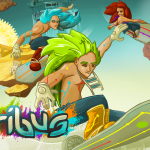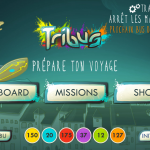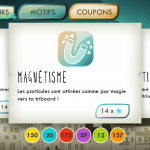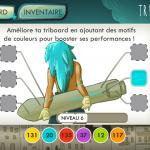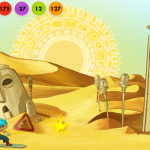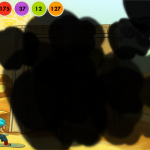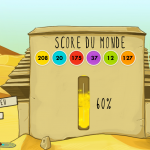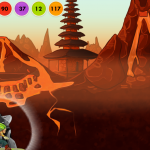Some months ago, I started a small project for a friend: a basic app for managing stock. A personnal project is always a good occasion for testing a new tech, and Xamarin was in my radar since a long time. With Xamarin Forms I was able to make an app with a native look & feel without having to bother with interface. Let see how it goes!
Continue reading Xamarin Forms, the love of cross platform native UI
Tag Archives: ios
Sign IPAs in Xcode without being a team member
Today, a quick post for a good tips!
Working with Adobe AIR, I enjoy the simple way to sign an IPA: someone provide you the p12 certificate, its password and the mobile provisioning files and you’re ready to go! If you put them on a Dropbox you have a nice combo for a whole team.
But, if you must compile your IPA in Xcode like (all?) the other technologies, it isn’t as easy as just linking via a file browser. If you’re in a team, you just have to sign in with your login in Xcode preferences or you could import the developer profile from an other dev (yeah the easy and dirty way). But how signing an IPA if we just have the raw files?
Import the p12 in your keychain and the mobile provisioning. Then launch Xcode.
Go to your project, and check signing identity. Specify the p12 in the code signing identity and the mobile provision in provisioning profile. Be sure to also do it for the target wanted.
Then make the archive via Xcode menu. If it asked you some authorizations for codesign you’re on the good way! Export, save for iOS App Store Deployement.
It will ask you the team, and obviously you’re not in the team so you can’t select it.
Specify local signing assets at the bottom list, and if everything is setup correctly, you will have your IPA.
Hurrah!
Install an IPA on iOS directly from a URL
Back from vacations in Québec (lovely country & people), it’s time for a quick blog post for sharing a good trick!
On iOS when you want to share a build with others, you mostly use a third party service (like TestFlight), or you provide the IPA and they have to install it via iTunes or even better iFunbox. Unlike Android (with an APK file), on iOS we’re not able to install an app directly from its binary (IPA). Unless you point your URL to a plist file!
Continue reading Install an IPA on iOS directly from a URL
Google+ ANE, our first commercial product
We’re glad to introduce our first commercial product: an ANE for Google+!
We’re big fan of Milkman Games’ ANEs, especially the GoViral one. It enables to share a post on Facebook, Twitter, mail… everywhere? Not really. It’s missing Google+! Thanks to our ANE, you will be able to target the Google+ platform for iOS and Android.
Geophysic, making AIR shine thanks to Feathers
Update: The project has been FWA mobile of the day! Note that this blog post was written 3 months before its publication.
This new project was kind of special for me, I made an iPad application, Geophysic® with one of the best French agency Soleil Noir for the famous luxary watches Jaeger-LeCoultre. No less!
When I was a student, Soleil Noir was the best French agency and we all dreamed to work there! So you could imagine how fun it was to work with them! As a luxury brand, Jaeger-LeCoultre, has a very high expectation of the final product. Combined with Soleil Noir’s graphic designers, it results in a top quality iPad application.
Continue reading Geophysic, making AIR shine thanks to Feathers
Tribus, Graduation Project
On Wednesday 20 th, I made my last orals for school. Some weeks ago, I’ve finished my training at Swad‘s web agency in Annecy. Since Wednesday my sandwich course at Gobelins school (Annecy) is finished, and now I’m in “holiday”. It means that I’m working on my new Portfolio and looking for a job probably at Lyon, France 😉
Let me introduce Tribus, the first game which use bus public transportation as gamification!
We were 4 people behind this project, Pauline the Graphic Designer, Coraline the Designer, Lory the Project Manager / Developer and me as the lead Developer.
Tribus is based on a simple observation : public transportation are boring time for many people. The idea was to play in real time with the bus public transportation and break the boredom thanks to the Gamification.
The Tribus’ concept is to gamify the bus route using its own elements : location, speed, line, bus stop… and offer a game!
The concept was there, but what type of game offer? A real time massive multi-players space opera? Impossible for a small team in 4 – 6 months, we aren’t Electronic Arts. A survival game with zombies? I loved this idea, it could have been awesome if we have worked on subway : safe point, network lost… all the ingredients were already present. However we wanted a game for everyone : fun, easy to play, stress-free… yep, one more casual game.
Tribus is a Canabalt type of game, it is close to Jetpack Joyride. But how are bus elements injected in the gameplay?
It is very difficult to have information on the bus, bus’ companies don’t disclose these informations. So we used the smartphone’s GPS. Thanks to it we could know our position and so the bus one. We have located bus stop in a database and so we knew if a user follow the bus route and then suppose that he is using the bus! The GPS is also used to know the bus speed and thus change the speed of the game.
We developed for iPhone, using Chipmunk and Sparrow for the game (not the app interface) and made a simple port of the Citrus Engine. Since this is my first project using Objective-C the port is not very “user friendly” and it can be improved a lot. Anyway, that was a very rewarding experience.
All the source code is available on GitHub.
A short video :
Screenshots :
Sparrow Framework, AnimationSequence class
Coming from AS3 & Starling framework, it is really easy to handle Sparrow. I was surprised to don’t find a class to manage several animations (like the gotoAndPlay in as3) in Starling and it is the same with Sparrow. So I’ve ported the AnimationSequence class (used in the Citrus Engine V3) from Starling to Sparrow.
Basically, the class extends SPSprite with all SPMovieClip animations added into a Dictionary which are addChild/removeChild (with the Juggler).
An AnimationSequence is defined with a texture atlas, an array with animation states and a simple string with the first animation :
AnimationSequence *mc = [[AnimationSequence alloc] initWithTextureAtlas:[SPTextureAtlas atlasWithContentsOfFile:@"Hero.xml"] andAnimations:[NSArray arrayWithObjects:@"walk", @"jump", @"idle", nil] andFirstAnimation:@"idle"]; |
To change an animation :
[mc changeAnimation:@"walk" withLoop:YES]; |
1 2 3 4 5 6 7 8 9 10 11 12 13 14 15 16 17 18 19 20 21 | #import "SPSprite.h" @interface AnimationSequence : SPSprite { NSMutableDictionary *mcSequences; SPTextureAtlas *textureAtlas; NSArray *animations; NSString *previousAnimation; } @property (nonatomic) NSMutableDictionary *mcSequences; @property (nonatomic) SPTextureAtlas *textureAtlas; @property (nonatomic) NSArray *animations; @property (nonatomic) NSString *previousAnimation; - (id) initWithTextureAtlas:(SPTextureAtlas *) textAtlas andAnimations:(NSArray *) multiAnimations andFirstAnimation:(NSString *) firstAnim; - (void) changeAnimation:(NSString *) animation withLoop:(BOOL)animLoop; @end |
1 2 3 4 5 6 7 8 9 10 11 12 13 14 15 16 17 18 19 20 21 22 23 24 25 26 27 28 29 30 31 32 33 34 35 36 37 38 39 40 41 42 43 44 45 46 47 48 49 50 51 52 53 54 55 56 57 58 59 60 61 62 63 64 | // // AnimationSequence.m // ChipmunkWrapper // // Created by Aymeric Lamboley on 06/03/12. // #import "AnimationSequence.h" @implementation AnimationSequence @synthesize mcSequences, textureAtlas, animations, previousAnimation; - (id) initWithTextureAtlas:(SPTextureAtlas *)textAtlas andAnimations:(NSArray *)multiAnimations andFirstAnimation:(NSString *)firstAnim { if (self = [super init]) { textureAtlas = textAtlas; animations = multiAnimations; mcSequences = [[NSMutableDictionary alloc] init]; for (NSString *animation in multiAnimations) { if ([textureAtlas texturesStartingWith:animation].count == 0) { NSLog(@"One object doesn't have the %@ animation in its TextureAtlas", animation); } [mcSequences setObject:[[SPMovieClip alloc] initWithFrames:[textureAtlas texturesStartingWith:animation] fps:25] forKey:animation]; } [self addChild:[mcSequences objectForKey:firstAnim]]; [[SPStage mainStage].juggler addObject:[mcSequences objectForKey:firstAnim]]; previousAnimation = firstAnim; } return self; } - (void) changeAnimation:(NSString *)animation withLoop:(BOOL)animLoop { if (!([mcSequences objectForKey:animation])) { NSLog(@"One object doesn't have the %@ animation set up in its initial array?", animation); } [self removeChild:[mcSequences objectForKey:previousAnimation]]; [self.stage.juggler removeObject:[mcSequences objectForKey:previousAnimation]]; [self addChild:[mcSequences objectForKey:animation]]; [self.stage.juggler addObject:[mcSequences objectForKey:animation]]; ((SPMovieClip *)[mcSequences objectForKey:animation]).loop = animLoop; ((SPMovieClip *)[mcSequences objectForKey:animation]).currentFrame = 0; previousAnimation = animation; } - (void) dealloc { [self removeChild:[mcSequences objectForKey:previousAnimation]]; [self.stage.juggler removeObject:[mcSequences objectForKey:previousAnimation]]; } @end |
Be careful, this version uses the ARC mode!
Objective-C basic interface
In this tutorial, we will see how to create a basic interface in Objective-C with code only. It will be one TextField and one Button. Yeah, just that and we will need 6 files! And maybe we will use some inheritance.
ActionScript 3 is really a smart language, it is very quick to create what we will do. Something like 10 lines of code… Anyway, in this tutorial I will not make comparisons between ActionScript 3 and Objective-C like the previous one unless it is really useful.
Open Xcode and create a new iOS empty application, disable everything. Many files are created, but we will use only AppDelegate.h and AppDelegate.m In the AppDelegate we will init our applications.
From AS3 to Objective-C
Some days after my article about what is happening to Flash developers, I have started to learn Objective-C and I already like it!
In this post, I will try to compare ActionScript 3 to Objecitive-C. I’m really new to Objective-C so if you find any errors in what I say, please add a comment to correct me.
According to Wikipedia : Objective-C is a reflective, object-oriented programming language that adds Smalltalk-style messaging to the C programming language. Today, it is used primarily on Apple’s Mac OS X and iOS. Objective-C is the primary language used for Apple’s Cocoa API.
